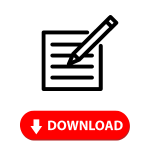If you are looking for a homeschool literacy curriculum, keep reading because this article is for you!
With countless options available, each claiming to be effective, it’s challenging to navigate the sea of information and understand the differences between curriculums.
The process of finding the right reading curriculum can be long and extremely confusing!
Our expert guide breaks down complex jargon and helps you understand the real differences among curriculums.
In this article I will summarize and explain in very simple terms the main styles/categories you are going to find in literacy curriculums.
Make confident decisions for effective literacy instruction today. Let’s get started!
*Affiliate Disclosure: This post may include affiliate links, meaning I could get a little commission if you buy from them, at no additional cost to you. This helps keep the information on this blog free and available to everyone.
NOTE:
Before we dive into the categories, it’s important to note that all the approaches I’ll discuss today utilize explicit synthetic phonics for teaching reading.
Synthetic phonics focuses on individual sounds (phonemes) in the language and teaches children the different ways these sounds can be represented.
Additionally, children learn the explicit connections between letters and sounds.
In synthetic phonics, you go from the part (from the sounds/from the phonemes – and how we represent them) to the whole (the words).
This is different from other types of phonics, for instance from analytic phonics. This is another way to teaching phonics where you go from the whole (the words) to the part (the sounds), rather than the other way around.
In analytic phonics, children are shown whole words and then it’s all about analyzing the words and reaching their own conclusions about how the code works.
Unfortunately, reading can get extremely confusing very soon, as many children won’t be able to figure things out so easily, without receiving proper explicit explanations.
If you want to learn more about the differences between analytic and synthetic phonics, read this article.
Category #1: Orton Gillingham approach to teaching reading
The Orton Gillingham (OG) approach is highly regarded in literacy curriculums and considered by many “the gold standard for teaching phonics.”
Why?
These curriculums provide explicit, structured instruction, gradually introducing new concepts and reinforcing previous learning.
Orton Gillingham curriculums don’t assume that children will just figure things out all by themselves. They teach the rules. Besides, they use very carefully-designed scope and sequences, with lots of opportunities for review along the way, to consolidate learning.
In that regard, this system ticks all the boxes of what works and has been proven to be more effective.
However, I think that the popularity of the Orton-Gillingham system really comes from pairing all of these things with the multisensory approach for a more holistic learning experience. This is probably what the OG approach is really well-known for.
The OG approach emphasizes multisensory techniques to enhance the learning experience. This is good for all children, but particularly effective for struggling readers, children with dyslexia or other learning differences.
Examples of curriculums following the OG approach include:
If you are interested in digging into these curriculums, we have other articles you may be interested in. For instance, this one or this one!
Category#2: Direct Instruction Model to Teaching Reading
The second category of literacy curriculums are Direct Instruction (DI) curriculums.
The Direct Instruction model to teaching reading emphasizes:
- Clear instructions
- Carefully planned lessons
- Very gradual learning
- The use of a script to avoid misinterpretations
It all revolves around giving instructions, and giving the right instructions! Even mistakes need to be corrected in a very particular way.
Direct Instruction curriculums also focus on moving students to mastery at the fastest possible pace for their abilities.
Probably the most popular curriculum that follows the Direct Instruction Model to Teaching Reading is “Teach Your Child to Read in a 100 Easy Lessons.”
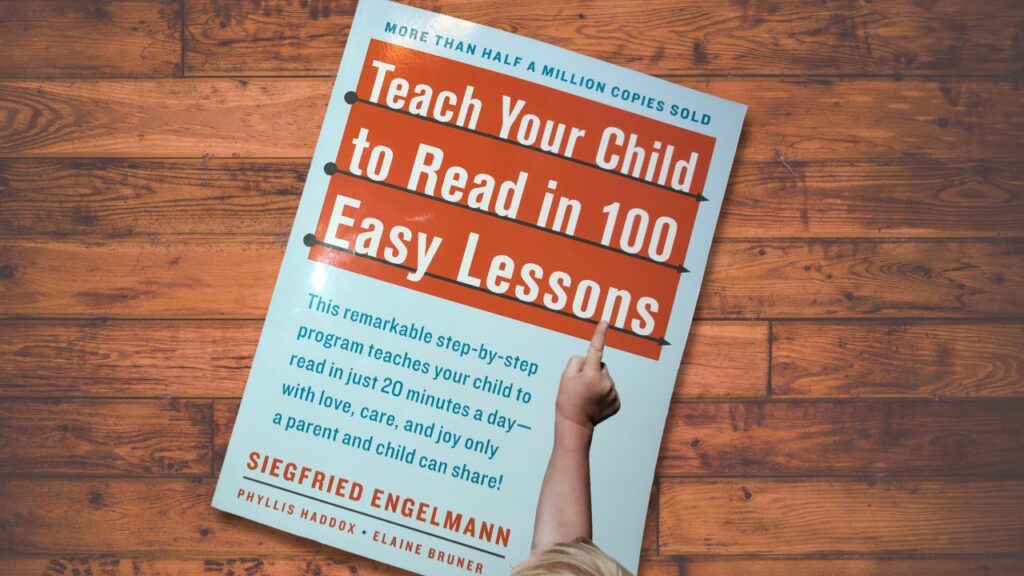
I’m not sure at what point exactly you are with your research into literacy curriculums, but I bet that you have at least heard of this program. It is extremely popular and the flagship of the Direct Instruction Model to teaching reading.
In fact, one of the co-authors of this program, Siegfried Engelman, was one of the original creators of the Direct Instruction method.
DI curriculums have achieved very positive results, in general. Besides, these programs are developed with a lot of field testing. If interested in digging into this more: Just How Effective is Direct Instruction? study / Direct Instruction Evidence: Project Follow Through

However, you should also know that the DI model is not everyone’s cup of tea! Some people find it too strict, because you need to follow a script and stick to the instructions you are given to a tee.
Examples of curriculums that follow the Direct Instruction (DI) model include:
- Teach Your Child to Read in a 100 Easy Lessons: With more than one million copies sold, this guide is a bestseller and the flagship of the Direct Instruction Model to teaching reading! Co-authored by Siegfred Engelmann, one of the creators of the Direct Instruction Model.
- Funnix: Computer-based home school reading program based on Direct Instruction programs originally created by, again, Siegfried Engelmann and his son, Owen. First released as a series of DVDs in the 90’s.
- Reading.com: Very complete, extremely well-designed literacy app based on the DI model to teaching reading you can use as your literacy curriculum.
Other alternatives more appropriate for intervention and for use in the classroom are: Corrective Reading and Reading Mastery Transformation.
Category#3: Phonics Primers
This is what I call the “no-frills” approach.
So, what is a primer?
It is the oldest method to teaching reading.
Primers have been used for centuries for teaching reading. However, they’ve changed slightly along the way.
For instance, below there’s an image of the “New England Primer.” This was the first reading primer designed in the American colonies.
It was one of the most successful textbooks of the 18th century. Not only did it teach reading, but also morality and religion through stories.

Curious to see more? For more images of the New England Primer, check this entry on the Smithsonian institution’s website.
Fast forward to the 21st century, you can still find phonics primers.
These primers introduce the basic principles of phonics basically through word lists ordered by difficulty level.
This method of teaching reading involves a lot drilling, as you move on from simple words (for instance two letter words or three letter cvc words) to words of increasing difficulty.
For instance, below you’ll find some images of a phonics primer called Alpha Phonics. This literacy curriculum is quite popular, as well. So, again, if you have already started your research into literacy curriculums, you have probably bumped into it!
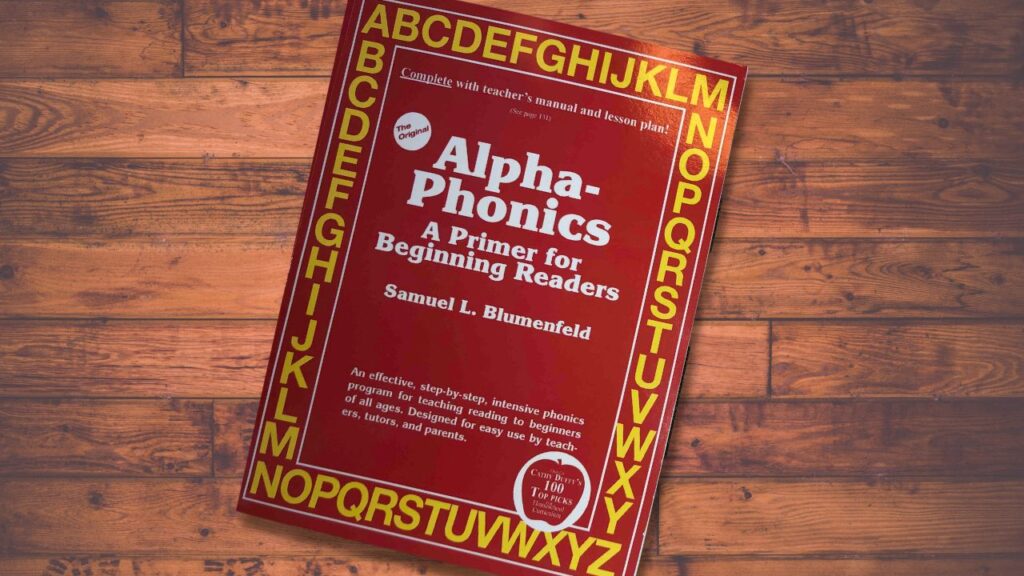
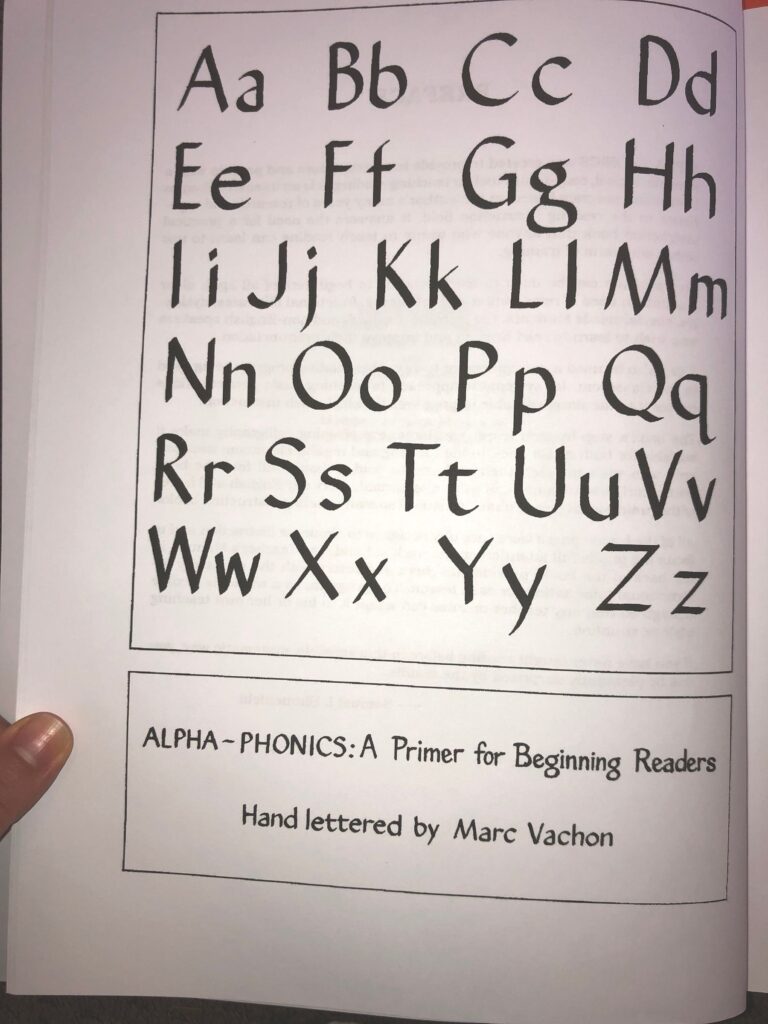
As you can see, lists and lists of words, black and white, drill, drill, drill, practice, practice, practice.
While primers may appear old-fashioned, they can be highly effective when the word lists are thoughtfully designed.
It’s important to complement primers with decodable books and writing practice for a well-rounded reading experience.
Examples of Phonics Primers:
Category#4: The Montessori System
Montessori also uses systematic synthetic phonics for teaching reading, but there are a few peculiarities:
- It teaches writing before it teaches reading or how to decode. This approach is considered organic. According to Montessori, the ability to write comes first and more naturally than the ability to blend sounds and read words.
- There don’t seem to be Montessori literacy curriculums as such. If you want to follow this route, you have courses, books and guides that introduce you to the Montessori system and give you recommendations, so you can create your own home school curriculum.
- There are three KEY materials that Maria Montessori relied on for teaching reading. These are the materials that you are going to use as well for teaching reading “the Montessori way”:
Sound objects, also called “language objects” for Phonemic Awareness.
-
- Used to develop your child’s ability to hear and manipulate the individual sounds in the language.
- You play the “I spy” game with these sound objects: “I spy with my little eye something that starts with /s/ or /p/.”
- You have these objects in front of your child and he/she has to pick the one that starts with that sound.
Sandpaper letters for connecting sounds to letter-symbols. They are made with rough sandpaper. Children are encouraged to swipe their fingers along the form of the letters.
A moveable alphabet for writing full words before children master how to write with a pen.
-
4. Maria Montessori developed her system to teach how to read Italian.
While these three materials were all she needed to teach how to read Italian, we shouldn’t forget that the Italian phonetic code is way simpler than the English one.
Children can learn how to read Italian in just a few months, because the Italian phonetic system is very transparent and extremely regular. Every letter represents only one sound, and sounds are represented always in the same way. Exceptions are rare.
Therefore, Maria Montessori’s original reading program, while probably very good for the initial stages of learning to read, was not enough for dealing with all the complexities of the English system.
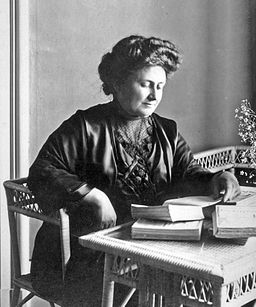
Apparently, his son, Mario Montessori said: “Dr. Montessori did not know the [English] language it was left to the ingenuity of Montessori trained people to find a solution.”
Most of the solutions used right now were proposed by a teacher trained on the Montessori system called Muriel Dwyer. The system is explained on the booklet “A Path for the Exploration of Any Language Leading to Writing and Reading.”
This would probably be your go-to guide for teaching to read “the Montessori way.”
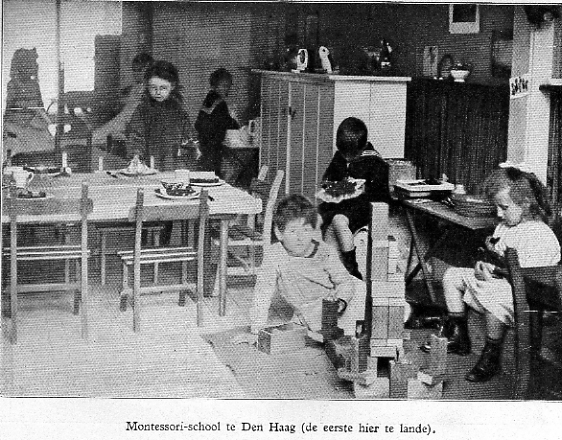
This guide is not available -at the time of writing this article- on Amazon or major bookstores, or as an e-book. You can get it through Montessori Teachers’ Associations.
For the next stages of learning to read, there are additional materials you will need to use.
For instance, matching objects and cards, phonetic word cards, phonetic activity cards or action word cards, puzzle words (this is how they call irregular high-frequency words), phonogram folders, etc.
All of these materials will allow you go ahead and execute Montessori activities and games for learning to read.
Lots of options here to get these materials.
For instance, on Amazon or on specific Montessori shops, like this one.
Category #5: The ones with no further labels…
Apart from being systematic, explicit, synthetic phonics programs, of course!
Does this make them worse? The fact that they don’t have any more labels added to them?
Of course NOT!
There are A LOT!! I’ll just name a few popular ones, and share a couple of highlights.
Children Learning Reading:
- Designed to teach even really young children to read.
- Great focus on the development of Phonemic Awareness.
- It does a really good job with the foundational skills.
- Straightforward
- Easy to implement.

Hooked on Phonics
- Simplicity
- There’s a clear routine that goes the same way every day.
- It includes lots of audio-visual elements
- You can reinforce learning with the Hooked on Phonics app, that matches the curriculum’s scope and sequence.
- Aligned with Common Core Standards
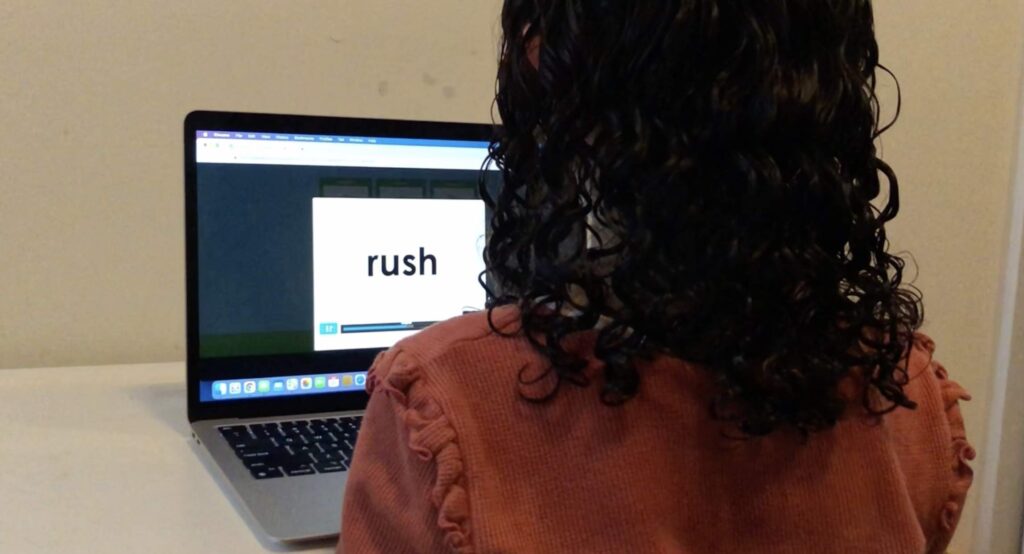
Phonics Pathways:
“The successive blending” curriculum. A great alternative for children that REALLY struggle with blending.
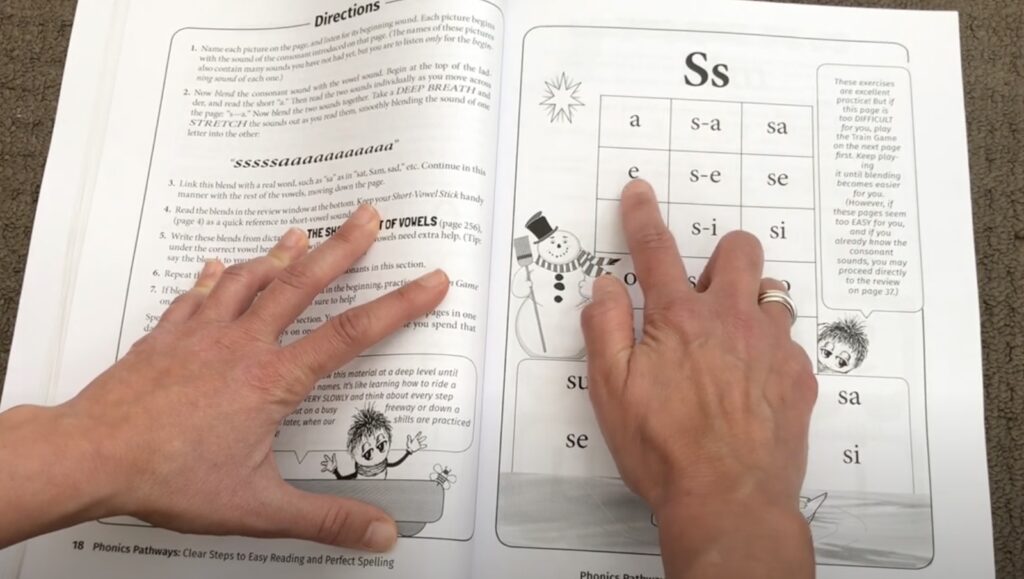
Category #6: Create your own homeschool curriculum
Finally, the last alternative we are going to cover is doing your own research and creating your own home school curriculum!
There are many affordable materials you can get from different places, for instance TPT or even from the Learning Reading Hub website, where we have lots of freebies and even a few paid materials as well.
It’s complex, and it’s a lot of hard work, as you have to educate yourself, research and put all of the pieces together.
But if you are up for it, it can also be exciting! And, of course, you can save money!
If that’s the route you want to follow, I’d suggest you read the guide “How to Teach a Child to Read from Scratch Step-by-Step?/The SIMPLE Roadmap to Reading Success.”

It’s a quick read, but it summarizes, in very simple terms, how to go about teaching reading with synthetic phonics.
It’s gives you a clear step-by-step roadmap. Plus, there’s no fluff, just very practical, to-the-point information. That could be a great a starting point.
After reading it, you can determine what it is that you specifically need to prepare and execute your plan.
You can download for free here, or on Amazon Kindle for only $0.99!
You can also take a look at this page, with lots of ideas/resources for beginner readers.
Conclusion
Choosing the right literacy curriculum for your child can be a daunting task. By understanding the different categories within synthetic phonics curriculums, you can make an informed decision.
Ultimately, the effectiveness of a curriculum depends on your child’s learning style and needs.
Do you want a summary with my notes?
I know I have thrown a lot of information at you, and you probably need more time to digest and process it all.
If you want, you can download my notes for free, your handy go-to document when picking your literacy curriculum!
OTHER ARTICLES YOU MAY BE INTERESTED IN…
What is Hooked on Phonics? A Comprehensive Review of this literacy Curriculum!
RESOURCES
Effective School Practice, 1995-96, on the Project Follow Through: https://www.nifdi.org/docman/di-news/volume-15/370-effective-school-practices-vol-15-no-1-winter-1996/file.html
New England Primer: https://en.wikipedia.org/wiki/The_New_England_Primer
A Path for the Exploration of Any Language Leading to Writing and Reading: https://shop.montessori-namta.org/products/a-path-for-the-exploration-of-any-language-leading-to-writing-and-reading
New England Primer on Smithsonian website: https://www.si.edu/object/new-england-primer-improved-1922%3Anmah_663068
The National Institute of Direct Instruction: https://www.nifdi.org/
Orton-Gillingham and Orton-Gillingham—Based Reading Instruction: https://www.semanticscholar.org/paper/Orton-Gillingham-and-Orton-Gillingham%E2%80%94Based-Reading-Ritchey-Goeke/7f3456e2ac2b4f6cde6f4864f45d794e7284beb2
Anna Gillingham : https://www.swarthmore.edu/bulletin/archive/fall-2019-issue-i-volume-cxvii/second-looks.html
Prefer to watch on video format? Watch it on YouTube!

Hey there! I’m Laura – an author, YouTuber, blogger, and the creator of the “Learning Reading Hub” platform. I created this space to dive into the world of reading instruction and to shout from the rooftops about how vital it is to use the right methods for teaching reading. I’ve got a TEYL certification (Teaching English to Young Learners), plus a Journalism degree from the University of Navarra in Spain, along with a Master’s Degree in Communication.
I’ve always loved digging into research, jotting down my thoughts, connecting with people, and sharing what makes me tick. With a background in marketing, digital projects, and the education scene (especially language learning), I’m all about wearing different hats.
When my first kid needed to learn how to read, it opened my eyes to the challenges and complexities involved. This journey took me through a rollercoaster of self-teaching, eye-opening discoveries, and yeah, some letdowns too. There’s so much conflicting info out there, along with methods that just don’t cut it. And let’s face it, these issues are way too common.
Now, I’m all about channeling that passion (without sounding like a know-it-all!) and sharing my journey. My mission? Making it easier for those who are on the same path I once was.
My heart’s with my family and the amazing Learning Reading Hub project. I live with my husband and two little ones, raising them in a bi-lingual environment (English and Spanish).








